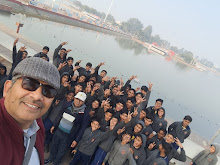The Council of Ministers consists of four categories of ministers;
1. Cabinet Minister
2. Minister of State (Independent Charge)
3. Minister of State
4. Deputy Minister
The difference in ministers lies in their respective ranks, emoluments and political importance.
The Prime Minister of the country is on the top of all of these ministers and he advises the President of India that which persons shall be included in the cabinet.
1. Cabinet Minister: The Cabinet Ministers heads the important ministries of the Central Government like Home Ministry, Finance Ministry, Defence Ministry, External Affairs Ministry and Ministry of Human Resource and Development etc. Generally the Cabinet Ministers consist of 18 to 25 ministers. This time there are 24 Cabinet Ministers.
Cabinet Ministers attend the crucial meetings and play a crucial role in the policy formation of the country.
2. Minister of State (Independent Charge): In this case the minister of state performs the same functions and exercises the same powers in relation to their ministries/departments as Cabinet Ministers do. However they are not members of the cabinet so not entitled to attend the cabinet meetings until they are not invited. Minister of state (independent charge) are invited in the cabinet meetings when something important related to their departments/ministries is considered by the cabinet.
3. Minister of State: These ministers are given the charge of the departments of the ministries headed by the Cabinet Ministers or allotted specific items of work related to the ministries headed by the Cabinet Ministers. So by and large these ministers work under the supervision and guidance of the Cabinet Ministers.
4. Deputy Ministers; These ministers are lowest in the rank. They are not given independent charge of the ministries/departments. They are attached to the Cabinet Ministers or Ministers of State to help them in their administrative, political and parliamentary duties. Deputy Ministers are not part of the cabinet so they do not attend the meetings of the cabinet.
Kitchen Cabinet: In addition to the above mentioned ministers there is another small body consist of the Prime Minister as its head and some key 15 to 20 most important ministers, called the Kitchen Cabinet. In realty this cabinet is not mentioned in the Indian constitution but it is the pivot of powers of the Central Government. This type of cabinet was first introduced by the Late PM Indira Gandhi.


No comments:
Post a Comment